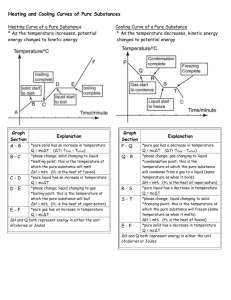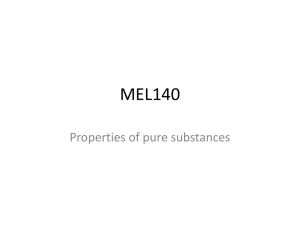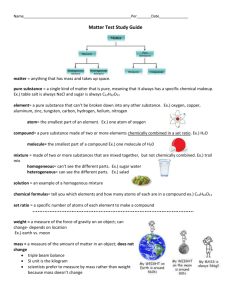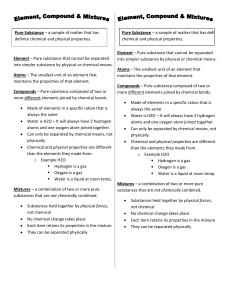Pure Code versus Impure Code
advertisement
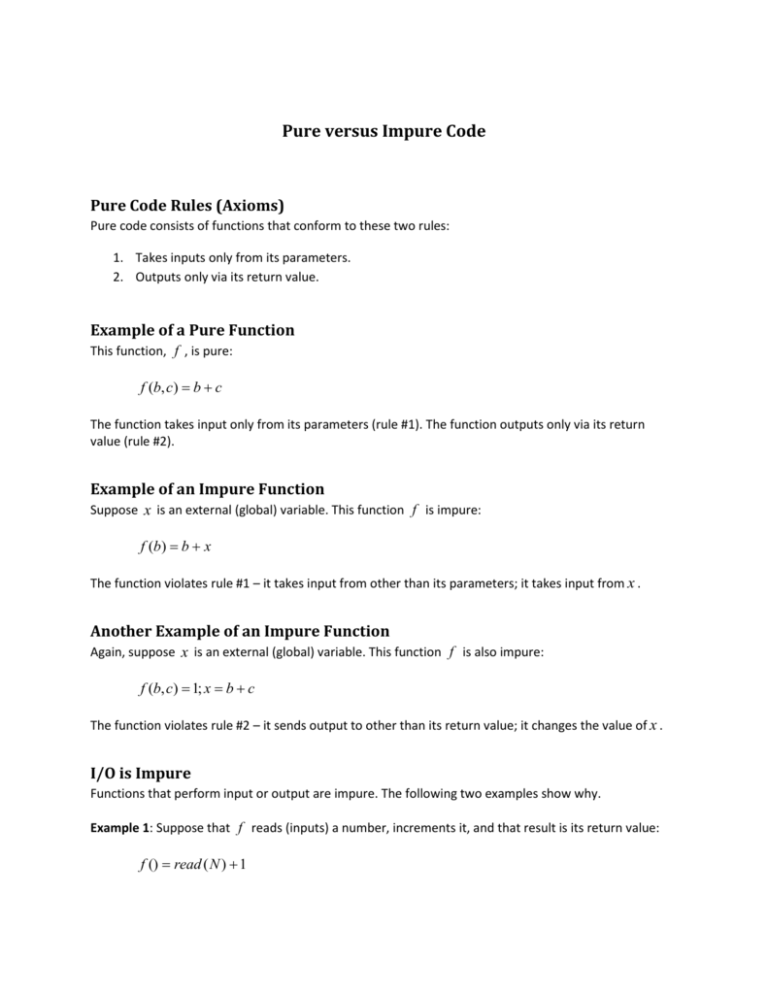
Pure versus Impure Code Pure Code Rules (Axioms) Pure code consists of functions that conform to these two rules: 1. Takes inputs only from its parameters. 2. Outputs only via its return value. Example of a Pure Function This function, f , is pure: f (b, c) b c The function takes input only from its parameters (rule #1). The function outputs only via its return value (rule #2). Example of an Impure Function Suppose x is an external (global) variable. This function f is impure: f (b) b x The function violates rule #1 – it takes input from other than its parameters; it takes input from x . Another Example of an Impure Function Again, suppose x is an external (global) variable. This function f is also impure: f (b, c) 1; x b c The function violates rule #2 – it sends output to other than its return value; it changes the value of x . I/O is Impure Functions that perform input or output are impure. The following two examples show why. Example 1: Suppose that f reads (inputs) a number, increments it, and that result is its return value: f () read ( N ) 1 The function violates rule #1 – it takes input from a source other than its parameters. Example 2: Suppose that f writes (outputs) the value of its parameter: f (b) write(b) The function violates rule #2 – it outputs to a destination other than its return value. No Input or Output? All code that does I/O is impure. Assuming pure code is preferred over impure code (see below, Advantages of Pure Code), should code never perform I/O? No. It means that code should separate those functions that perform I/O from those that are pure code. Advantages of Pure Code Pure functions can combine to make larger pure functions. Impure functions combined with pure functions make larger impure functions. A consequence of pure code is that since it is dependent only on its inputs (rule #1) you can make statements like f (1,2) is always is equal to f (1,2) at any time without knowing what the function f is, or how it’s implemented. That's quite powerful, and can be useful in optimization. A pure piece of code causes no side-effects, and it is not affected by other code's side-effects. This property is very useful in parallel computations. Consider a pure function that is called by some code. You can safely ignore the function when analyzing the calling code; you know the function doesn't change any state. Pure code is easier to reason about, compose, and change than impure code. Programming Design Principles Principle 1: Isolate/separate impure code from pure code. Principle 2: Make most of your program pure, especially important logic. These principles can be implemented in any programming language. More Information Here are web pages that discuss pure code: http://en.wikipedia.org/wiki/Pure_function http://en.wikipedia.org/wiki/Referential_transparency_(computer_science) http://en.wikipedia.org/wiki/Idempotence#In_computing Acknowledgements Thanks to the following individuals for enlightening me on this fascinating subject: - Thomas Davie - Christopher Done - Mike Meyer - Sean Perry - Paul Sargent

